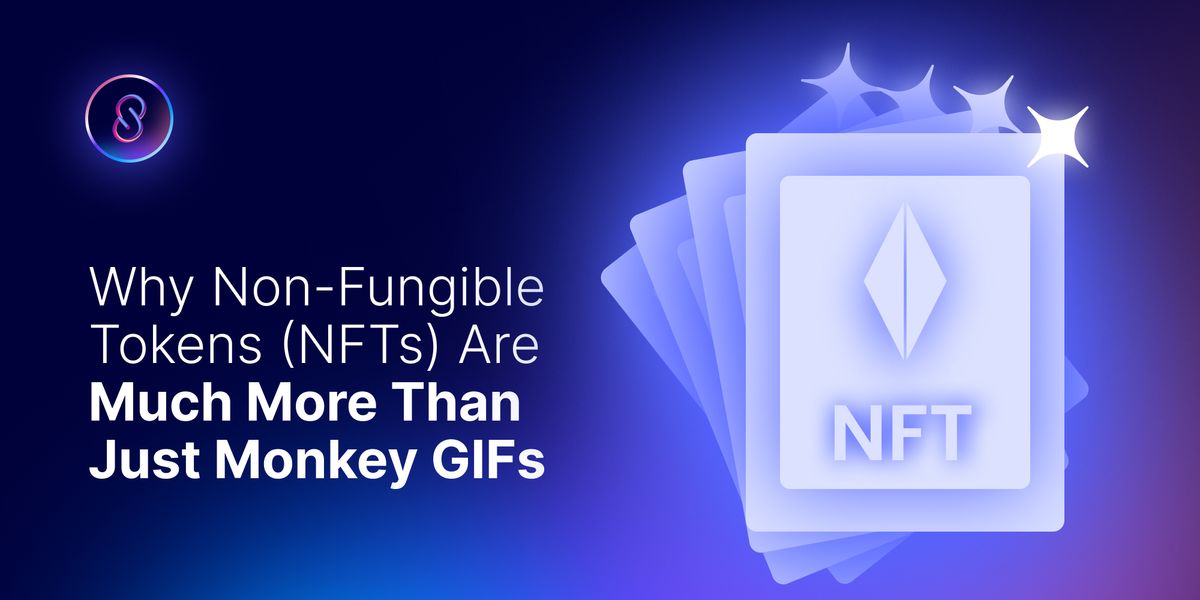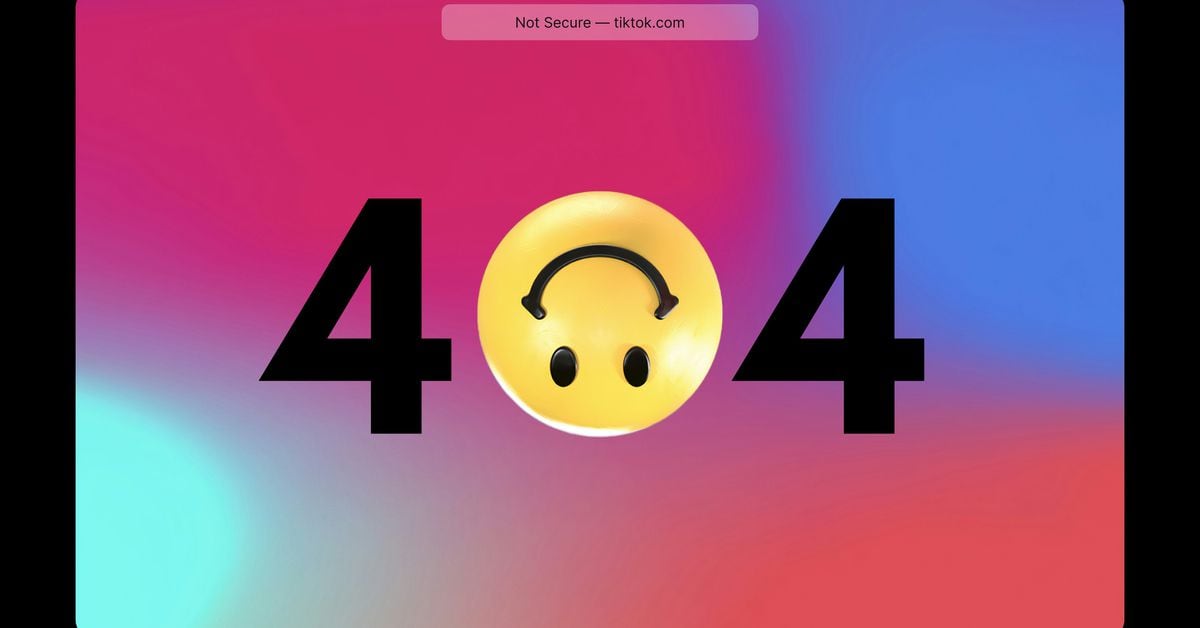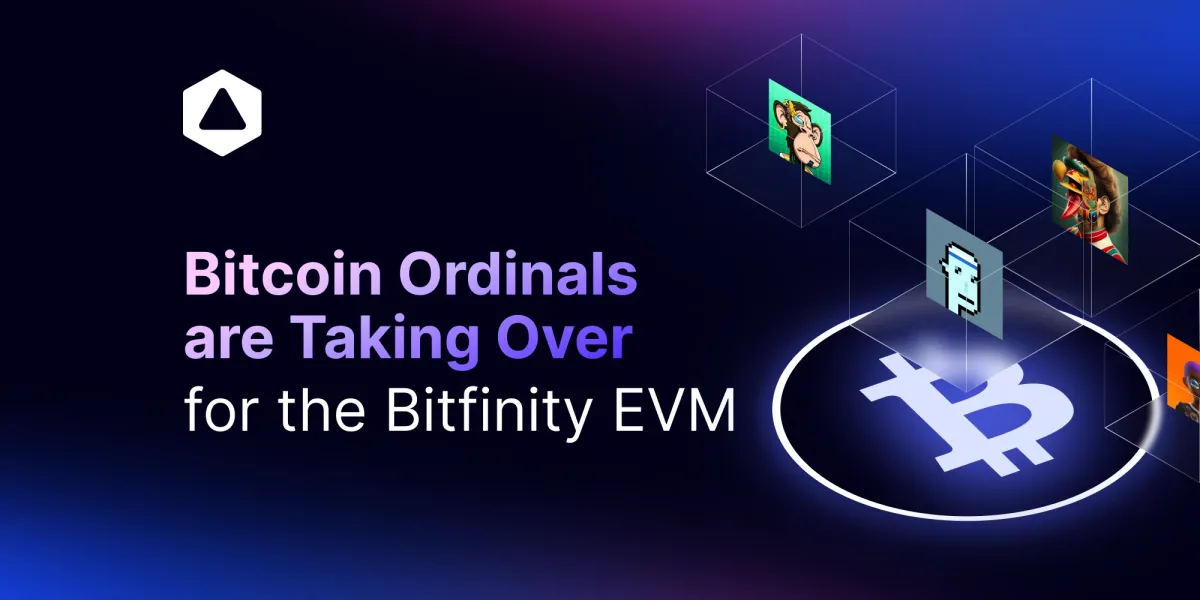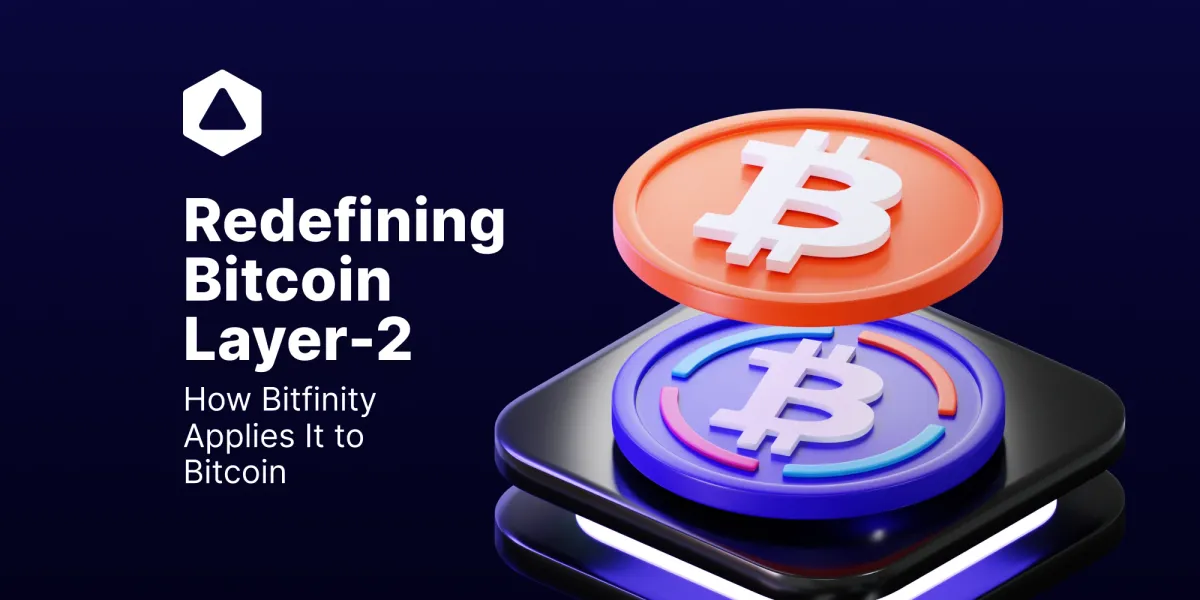The Past, Present and Future of the Infantile ERC-404 Space

The cryptocurrency market continuously evolves and amazes, this also being the case when looking at the latest experimental Ethereum standard, ERC-404, which perhaps answers all the new tokenization experiments on Bitcoin, if we view it as a competitive playground. In this article we take a look at how this new standard is reshaping the way NFTs are owned and traded, and ways these tokens could be used in the future utilizing Bitfinity.
The ERC-404 Token Standard
To begin from the start, we must acknowledge ERC-404 is yet another ‘unofficial’ (whatever that means in crypto), innovative standard that fuses the characteristics of ERC-20 and ERC-721 standards.
It allows a token to be fungible when traded in parts and non-fungible when held as a whole. This dual nature is facilitated through a unique mint and burn mechanism, which ensures the non-fungible token's uniqueness is preserved.
With an integration that allows for the creation of fractionalized NFT collections that can be traded and utilized like typical tokens and opens up possibilities for tokenizing NFT exposure for financial activities like loans or staking. But even more features are within this new standard.
Understanding the Hybrid Nature of ERC404
ERC404 tokens are an innovative hybrid between the ERC-20 and ERC-721 standards. They function as fungible tokens, much like ERC-20s, which means they are interchangeable.
Fungibility and Non-Fungibility Combined
An ERC-404 token can act as a fungible token when traded in fractions, but represents a non-fungible token when it is whole. This duality is maintained through a process where an NFT is burned upon fractionalization and a new one is minted when fractions are recombined into a whole token.

Minting and Burning Mechanism
We talked about the unique minting and burning strategy which ensures that the ERC-721 non-fungible token retains its unique properties, while allowing the ERC-20 component to be traded in parts.
The idea is that by leveraging the fungibility of tokens, one can extract liquidity, which is the primary use of fungible assets. However, this creates a dilemma. If someone owns multiple collectibles, which specific one gets burned upon the redemption of these tokens? This is particularly problematic when considering the variance in value among different collectibles.
Practical Example: What Occurs When You Transfer an ERC-404 NFT
When a user possesses a fraction of an NFT, the whole NFT is not visible until they accumulate enough fractional tokens to form a whole, at which point an NFT is made available to them, potentially a different one from what was initially fractionated.
Transferring an NFT seems straightforward, but it's important to distinguish between different kinds of transfers and their outcomes.
Transferring NFTs Between Wallets
When you simply transfer an NFT from one wallet to another, your NFT remains unchanged. The digital asset retains its original properties and rarity, moving intact to a new location.
Transferring Tokens and the Effects on NFT Rarity
However, the situation is different when you transfer tokens. If you move your token to a new wallet, you essentially generate a new NFT with a new rarity. This process, known as rerolling for new rarity, can alter the value and uniqueness of your digital collectible. So you've got to watch out when doing this, if you don’t want to lose your NFT.
The Emergence of Pandora
Pandora stands at the forefront of the ERC-404 movement, having launched on February 2nd as a pioneer in the adoption of this innovative token standard.
The sudden popularity of Pandora, which skyrocketed by 12,000% in just one week and boasted a market cap of nearly $300 million and launched with a robust trading volume of $10 million in just the first five hours, has definitely captured the attention of the NFT community and ERC-20 token traders alike.

Other Examples of ERC-404 Projects
Now that Pandora has kicked off ERC-404 season, we see that other ERC-404 tokens are making their mark across various platforms, with availability on supported exchanges and listings on prominent NFT marketplaces like Blur and OpenSea.
DeFrogs
DeFrogs leverages the PEPE meme culture and the ERC-404 narrative to create a community centered around its 10,000 cartoon frogs PFPs. DeFrogs has established itself as a noteworthy ERC-404 project and is very interesting for frog enthusiasts.
EtherRock404
EtherRock404, which is a derivative of the original EtherRock NFT collection, has also embraced this new standard and offers 'zero utility' assets that are simply meant to be bought and sold. Last bull market it gained insane valuations of just being a rock, let's see what this bull mark
Benefits of ERC-404 Tokens
The ERC-404 standard brings several advantages to the digital asset ecosystem:
Liquidity in the NFT Market
This new token standard was introduced to enhance the liquidity of NFTs, which was one of the major challenges in the NFT markets. In traditional markets, you need to post NFTs and need to wait for potential buyers, which can be a slow and uncertain process, especially if you hold large amounts.
Improved Market Fluidity
On top of this, an ERC-404 token can either be sold on these traditional NFT markets or, if a user chooses to do so on Uniswap, it can be sold there as well. This greater flexibility allows for drastically improving liquidity in either way, as there are more ways to buy or sell.
Native Fractionalization of NFTs
Finally, this new standard reduces barriers for investors interested in high-value NFTs but who don’t have the funds available to buy it completely.
Previously this was only achieved by separate fractionalization protocols, and now, as in crypto, cutting out the middleman and leaving the user with the possibility to break down an NFT themselves, democratizing ownership.
Integration with DeFi Protocols
The standard allows ERC-404 tokens to be incorporated into core DeFi protocols, such as lending, without requiring separate NFT fractionalization services. Hereby opening up new avenues for token usage and liquidity within decentralized finance.
An Official Token Standard?
But ERC-404 are not officially recognized by the Ethereum Foundation. However, they are being actively used within the Ethereum network. The ERC-404 developers are currently working on submitting an Ethereum Improvement Proposal (EIP) to gain official recognition for their token standard.
ERCs are essential for setting application-level standards in the Ethereum network, ensuring interoperability and security. The comprehensive EIP process involves community scrutiny and multiple stages of review, which ERC404 has bypassed.
Official or not, the excitement around ERC-404 has spread rapidly, with notable exchanges like OKX and Binance announcing support for ERC-404 tokens. This has partly legitimized the standard but has not immediately cast it as a scam, instead encouraging other projects to launch their versions of ERC-404 tokens.
Drawbacks of ERC-404 Tokens
With the rise of this new token standard, a few problems have surfaced above water. We need to consider that this token standard is the newest of the new, so there hasn’t been much auditing yet. The code is not yet stress tested, and surely we will see some vulnerabilities associated with the mechanism of burning linked NFTs.
Also, the fungibility question arises, where it implies equal value and interchangeability, but when linked to non-fungible assets, complications emerge.
If you fractionalize a rare collectible, the question is: which one are you really fractionalizing? The fractions of a more valuable asset should theoretically have different token values compared to a less rare one.
This distinction is not clear in current iterations of the protocol, leading to confusion among users. Although it cuts out the middleman, the standard is still complex and could pose a challenge for new users who just want to speculate or buy an NFT but not do both.
Surge in Ethereum Gas Fees
The Ethereum network doesn't need much to overheat, and with the massive popularity of ERC-404 tokens, it almost ‘broke’, leading to high congestion. Where the surge in trading volumes from ERC-404 tokens pushed the fees as high as $840 for transactions that would typically cost around $50.
According to PopPunk, the co-founder of gas-auditing firm Gaslite, an ERC-404 token transaction may use around three times the gas needed for a typical NFT transaction.
An average ERC404 transfer is 125,000 gas units.
— Pop Punk (@PopPunkOnChain) February 6, 2024
More than 3x the gas of an average ERC721A transfer.
This is nightmare fuel.
Gaslite could either:
1) build a more optimized (and more compliant version of this standard)
2) ignore it and let it fade into the ether
A significant part of the network usage on February 9 was due to increased activity on Uniswap, a popular decentralized exchange protocol. This heightened activity is largely attributed to the considerable trading volumes produced by the new ERC-404 hype.
Alternative to the ERC-404 Token Standard
In response to the issues and popularity of ERC-404 tokens, a rival implementation known as Divisible NFT or DN-404 is being developed. Spearheaded by a developer under the pseudonym cygaar, this new standard aims to optimize the code to reduce transaction fees.

The DN-404 standard is expected to mitigate the increased costs and network congestion associated with the original standard.
ERC-404 for Bitcoin and Other Chains
Technically, deploying tokens, whether fungible or non-fungible, is not novel to the Bitcoin system. A token's initiation signifies fractions emerging from that first deployment.

The ERC 404 differs in packaging, implying convergence of fungible and non-fungible tokens into a hybrid class. This concept could apply to Bitcoin too, using ordering to build mechanisms for fungible and non-fungible tokens within its framework.
Bitfinity Facilitating Experimentation on Bitcoin
ERC-404's novel tactic could result in real-world asset securitization, a long-awaited goal for web3. But this standard and many others to come are just another experimenting block on the stairway to Bitfinity, so to speak. Which will motivate new meta protocol proposals on others like Bitcoin, potentially widening its sway beyond Ethereum.
Bitfinity plays a key role in applying layer 2 scaling solutions to Bitcoin through its implementation of an Ethereum Virtual Machine on the Internet Computer protocol. This means that experimentation will be possible on Bitcoin directly using the EVM and coding base from Ethereum.
Bitfinity is redefining the Bitcoin Layer-2 space and providing an immense network for all Ethereum developers while doing so.

Future Outlook on ERC-404
The ERC-404 standard presents an ambitious venture into a new form of token standard. It offers the prospect to own a token acting as both fungible and non-fungible asset. However, note ERC-404 remains experimental, as developers address issues like transaction costs and handling the ERC-721 part.
Fractionalizing an asset implies prospects for oversight as it resembles distributing shares, a regulated job. ERC-404's fractionalization strategy may raise flags with bodies due to similarities with securities.
Though not an official Ethereum token standard yet, ERC-404 progresses toward becoming one. Despite present weaknesses, optimism remains it will advance over time. The NFT sector, particularly on Ethereum, wants innovation.

Connect with Bitfinity Network
Bitfinity Wallet | Bitfinity Network | Twitter | Telegram | Discord | Github

*Important Disclaimer: While every effort is made on this website to provide accurate information, any opinions expressed or information disseminated do not necessarily reflect the views of Bitfinity itself. The information provided here is for general informational purposes only and should not be considered as financial advice.




Comments ()